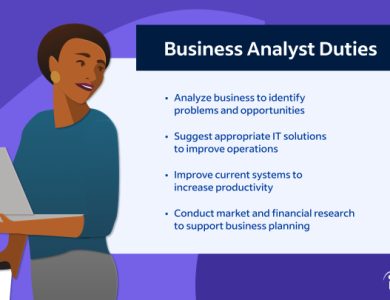Your website is a finely tuned engine on the digital highway. While the paint job (content) and the exterior (design) matter, it’s the mechanics under the hood that can truly propel you to the coveted first page of search engine results. Welcome to the realm of technical SEO, the often-underestimated force that has the potential to revolutionize your online visibility.
While most of us are familiar with the idea of SEO, a term thrown around in marketing meetings and brainstorming sessions, the real magic often happens behind the curtains. Technical SEO involves the nitty-gritty details that might not be as glamorous as keyword research or influencer outreach, but are just as crucial. Think of it as the foundation of a magnificent skyscraper; without it, the whole structure could crumble. In this comprehensive guide, we’re going to delve into the intricate world of technical SEO. So fasten your seatbelt as we take you on a journey through website speed optimization, mobile-friendliness, HTTPS security, and more—all the elements that will propel your website to the top of the search engine charts.
1.Website Speed Optimization: Where Every Millisecond Counts
You’re browsing the web, searching for something that piques your interest. Suddenly, you click on a link, and nothing happens. Frustration sets in as you wait for what feels like an eternity for the page to load. Sound familiar? This scenario isn’t just frustrating for users; it’s a red flag for search engines too. Page loading speed has a direct impact on user experience and SEO rankings. Research from the best SEO services shows that if a page takes more than a couple of seconds to load, users are more likely to bounce off. This bounce rate sends a signal to search engines that your content might not be valuable or relevant, causing your rankings to drop faster than a lead balloon.
So how do you prevent this from happening? It all boils down to website speed optimization. This isn’t just about shaving off milliseconds; it’s about creating an environment where users feel welcomed and engaged. One of the first steps is optimizing images – a frequently overlooked aspect of web development. Large, uncompressed images can be a massive drag on loading times. By compressing images and using modern formats like WebP, you can drastically reduce loading times without compromising on quality.
CSS and JavaScript files are also common culprits behind slow websites. Minifying these files – a process that involves removing unnecessary characters and spaces – can make them leaner and meaner, allowing your website to load faster. And don’t forget about browser caching. When users visit your website, their browser stores certain images and scripts. With browser caching enabled, returning visitors can load these elements from their cache instead of downloading them again, resulting in faster load times.
2.Mobile Friendliness: The Era of Mobile-First Indexing
Remember when mobile phones were just for calls and texts? Those days are long gone. With the advent of smartphones, our online experiences have shifted dramatically. It’s no surprise that search engines have also adapted to this mobile revolution. Enter mobile-first indexing – a practice where search engines primarily consider the mobile version of your website’s content for indexing and ranking. If your website isn’t optimized for mobile, you’re not just missing out on potential customers, but also risking your SEO rankings.
You need a responsive design to make your website mobile-friendly. This means your website adapts to different screen sizes, ensuring that it looks and functions seamlessly whether your users are on a smartphone, tablet, or desktop. Responsive design isn’t just a trend; it’s a necessity in the age of mobile-first indexing. But it’s not just about aesthetics. Mobile users have different behaviors and expectations, and a mobile-friendly website addresses these needs, making it more likely for users to stay and engage with your content.
3.Secure HTTPS: Building Trust and SEO Momentum
How would you feel if you walked into a store and noticed that the doors were locked with a rusty padlock? Would you feel comfortable leaving your credit card information there? Probably not. Just as you wouldn’t trust a physical store with poor security, users won’t trust a website that isn’t secure. This is where HTTPS comes into play. HyperText Transfer Protocol Secure (HTTPS) is the secure version of HTTP, the protocol over which data is sent between your browser and the website you’re connected to. It encrypts this data, ensuring that sensitive information like credit card details and login credentials are safe from prying eyes.
But HTTPS isn’t just about security; it also affects your SEO rankings. Search engines prioritize secure websites because they want to provide users with safe browsing experiences. In fact, Google has explicitly stated that HTTPS is a ranking factor. This means that if your website isn’t using HTTPS, you could be at a disadvantage in the search rankings. Making the switch from HTTP to HTTPS might seem daunting, but it’s a crucial step in securing your users’ trust and improving your SEO standing.
4.XML Sitemap and Robots.txt: Guiding Search Engine Crawlers
Imagine wandering through a dense forest without a map or any signs to guide you. You’d likely end up lost and disoriented. The same principle applies to search engine crawlers. Crawlers are bots that scour the web, indexing and ranking web pages. But they need guidance to navigate your website effectively.
An XML sitemap is like a map of your website that you hand over to search engine crawlers. It lists all the pages on your site, making it easier for crawlers to understand your site’s structure and find all your valuable content. By creating and submitting an XML sitemap, you’re essentially telling search engines, “Hey, here’s everything you need to know about my website. Have at it!”
On the other hand, robots.txt is like a bouncer at a VIP party. It tells crawlers which pages they can and cannot access. This is especially useful for pages that you don’t want to be indexed, like private login areas or certain sections of your website that aren’t relevant to search engines. By using a robots.txt file, you can direct crawlers to focus on the pages that matter most, optimizing their crawl budget and ensuring that your valuable content gets the attention it deserves.
5.Canonical URLs: The Art of Avoiding Duplicate Content Drama
How many times would you be able to hear a captivating story word-by-word, again and again? Not only would it be redundant, but it could also steal the spotlight from the original reactions to the tale. This scenario is akin to what happens when search engines encounter duplicate content on the web. Duplicate content can confuse search engines, dilute the authority of your pages, and even lead to penalties in extreme cases.
Enter canonical URLs – the heroes that save the day when it comes to duplicate content. A canonical URL is the preferred version of a web page that search engines should consider the primary source. It’s like telling search engines, “Hey, I know there are similar pages out there, but this one right here is the real deal.” By adding canonical tags to your web pages, you’re ensuring that search engines understand which version of the content is the authoritative one. This not only streamlines your SEO experts efforts but also helps search engines serve the most relevant and high-quality content to users.
6.Structured Data Markup: Adding Context to Your Content
So, you’re at a library, trying to find a specific book. You search through the shelves, and all you see are rows and rows of books with their titles facing outward. It’s a sea of text, and you’re struggling to find what you’re looking for. Imagine now if each book had a clear label detailing its genre, author, and a brief summary. Finding the right book would be a breeze. This scenario mirrors the challenge search engines face when trying to understand the context of your web content.
Structured data markup is like the labels on library books. It’s code you add to your website that provides search engines with additional information about your content. This information, in turn, can be used to display rich search results—those eye-catching snippets that include images, ratings, and other relevant details. Digital marketing solutions help a lot in sorting out the content for your business. By implementing structured data, you’re helping search engines understand your content better, increasing the chances of your web pages standing out in search results and enticing users to click through.
7.Fixing Broken Links and 404 Errors: Where User Experience and SEO Converge
Picture this: you’re exploring a city, following a map that promises hidden gems at every turn. But every time you reach an intersection, the road is blocked, and the path is obstructed. You’re frustrated and tempted to give up. The same frustration arises when users encounter broken links or 404 errors on your website. These dead ends not only disrupt their journey but also send negative signals to search engines.
A broken link is like a road that leads nowhere; users click on it, only to be met with disappointment. A 404 error occurs when a page is not found. Both scenarios result in a poor user experience and negatively impact your SEO. Regularly auditing your website for broken links and 404 errors is crucial. Tools like Google Search Console can help you identify these issues and take corrective action. By fixing broken links and providing users with a smooth, obstacle-free journey, you’re not only improving the user experience but also sending positive signals to search engines.
8.Mobile-First Indexing: Adapting to a Mobile-Centric World
In a world where mobile devices have become extensions of our lives, it’s only natural that search engines adapt to our mobile-centric habits. Mobile-first indexing is a significant shift in how search engines evaluate and rank websites. Instead of primarily considering the desktop version of a site, they now prioritize the mobile version. This means your website’s mobile version needs to be as robust and informative as its desktop counterpart.
To thrive in the age of mobile-first indexing, you need to optimize your website for mobile devices. Start by using responsive design, which ensures your content adapts seamlessly to different screen sizes. Next, focus on mobile-friendly navigation and the user experience. Keep menus concise, use touch-friendly buttons, and minimize the need for zooming and scrolling. By prioritizing mobile optimization, you’re not only catering to user preferences but also positioning your website for higher rankings in mobile search results.
9.Page Indexing and Crawling: Directing Search Engine Attention
Again, a scenario to do with a library and a librarian. You are a librarian, and someone hands you a book without a title, author, or any discernible information. How would you categorize it? This scenario mirrors the challenge search engines face when they encounter unindexed or poorly crawled web pages. Proper indexing and crawling are fundamental to ensuring your web pages are visible to search engines and, subsequently, users.
Indexing is the process of adding your web pages to a search engine’s index, a massive database of web pages. Crawling, on the other hand, is the process of search engine bots (crawlers) navigating your website, following links, and gathering information about your content. To ensure your most valuable pages are indexed and crawled, you need to provide clear signals to search engines. This involves optimizing your site’s internal linking structure, creating XML sitemaps, and using robots.txt effectively. By mastering indexing and crawling, you’re laying the foundation for better search engine visibility and user engagement.
10.URL Structure and Hierarchy: The Roadmap to Navigating Your Site
Have you ever driven through a city with no street signs or addresses? It would be a chaotic and frustrating experience, right? The same principle applies to navigating websites. Users and search engines need clear, organized URLs that reflect the structure of your site. A well-structured URL not only aids navigation but also provides context about the content on the page.
Start by crafting URLs that are descriptive and concise, giving users an idea of what to expect when they click on the link. Avoid long strings of numbers, symbols, and irrelevant keywords. Instead, use logical categories that mimic the hierarchy of your website. A clear URL structure not only improves the user experience but also aids search engine crawlers in understanding your content. By optimizing your URL structure, you’re creating a roadmap that guides users and search engines through the intricate landscape of your website.
11.Website Architecture: The Blueprint for User-Friendly Design
Designing a house without a blueprint is impossible. The rooms will be scattered, the walls won’t align, and the flow will be chaotic. The same can happen with your website’s architecture if you neglect its organization and structure. A well-structured website architecture is like a well-designed house: it enhances the user experience, aids navigation, and positively impacts SEO.
Start by organizing your content into logical categories and subcategories. This not only helps users find what they’re looking for but also provides a clear hierarchy that search engines can understand. Next, leverage internal linking to connect related pages, guiding users through your content and effectively distributing page authority. User experience and SEO services are closely intertwined, and enhanced website architecture is the bridge that connects them.
12.Technical Audit and Monitoring: The Ongoing Quest for Excellence
Imagine you’re driving a high-performance sports car. It’s a marvel of engineering, designed for speed and precision. But without regular maintenance and check-ups, even the most sophisticated machines can experience performance issues. The same principle applies to your website’s technical SEO. While implementing the strategies mentioned above is crucial, ongoing audits and monitoring are equally vital to ensuring your website maintains its SEO excellence.
Regular technical audits involve assessing your website for issues like broken links, slow loading times, and duplicate content. Tools like Google Search Console and various SEO service providers can provide valuable insights into your website’s health. Monitoring your website’s performance allows you to catch issues early, make necessary adjustments, and stay ahead in the ever-changing world of search engine algorithms. By embracing the concept of continuous improvement, you’re setting the stage for long-term SEO success.
Conclusion
You have just journeyed through the intricate world of technical SEO, exploring the nuances that separate high-ranking websites from the rest. While the allure of keywords and backlinks might be strong, the foundation of your online success lies in the technical details. By optimizing your website for speed, embracing mobile-friendliness, securing HTTPS, and mastering elements like XML sitemaps, canonical URLs, and structured data markup, you’re equipping yourself with the tools to soar in search engine rankings.
Remember, technical SEO isn’t a one-time endeavor; it’s a continuous process of refinement and enhancement. Just as a skilled mechanic keeps a race car in prime condition, your ongoing technical audits and monitoring will keep your website performing at its best. So, as you embark on this journey, armed with newfound knowledge, may your website rise through the ranks, capturing the attention of both users and search engines alike.




